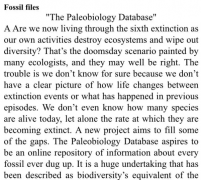青岛朗阁:2016年1月23日雅思阅读考试真题回顾及解析
来源:青岛朗阁
浏览:
发布日期:2016-01-25 11:42
摘要:2016年1月23日的雅思阅读考试都考了哪些题目?青岛朗阁小编第一时间为大家带来了2016年1月23日的雅思阅读考试真题回顾及解析,希望对雅思考生们有所帮助~
青岛朗阁 李园
| 考试日期: | 2016年1月23日 |
| Reading Passage 1 | |
| Title: | Classing Societies |
| Question types: |
判断7 简答6 |
| 文章内容回顾和参考答案 |
参考文章(仅供参考): CLASSIFYING SOCIETIES Although humans have established many types of societies throughout history, sociologists and anthropologists tend to classify different societies according to the degree to which different groups within a society have unequal access to advantages such as resources, prestige or power, and usually refer to four basic types of societies. From least to most socially complex they are clans, tribes, chiefdoms and states.ClanThese are small-scale societies of hunters and gatherers, generally of fewer than 100 people, who move seasonally to exploit wild (undomesticated) food resources. Most surviving hunter-gatherer groups are of this kind, such as the Hadza of Tanzania or the San of southern Africa. Clan members are generally kinsfolk, related by descent or marriage. Clans lack formal leaders, so there are no marked economic differences or disparities in status among their members. Because clans are composed of mobile groups of hunter-gatherers, their sites consist mainly of seasonally occupied camps, and other smaller and more specialised sites. Among the latter are kill or butchery sites—locations where large mammals are killed and sometimes butchered-and work sites, where tools are made or other specific activities carried out. The base camp of such a group may give evidence of rather insubstantial dwellings or temporary shelters, along with the debris of residential occupation.TribeThese are generally larger than mobile hunter-gatherer groups, but rarely number more than a few thousand, and their diet or subsistence is based largely on cultivated plants and domesticated animals. Typically, they are settled farmers, but they may be nomadic with a very different, mobile economy based on the intensive exploitation of livestock. These are generally multi-community societies, with the individual communities integrated into the larger society through kinship ties. Although some tribes have officials and even a "capital" or seat of government, suchofficials lack the economic base necessary for effective use of power. The typical settlement pattern for tribes is one of settled agricultural homesteads or villages. Characteristically, no one settlement dominates any of the others in the region. Instead, the archaeologist finds evidence for isolated, permanently occupied houses or for permanent villages. Such villages may be made up of a collection of flee-standing houses, like those of the first farms of the Danube valley in Europe. Or they may be clusters of buildings grouped together, for example, the pueblos of the American Southwest, and the early farming village or small town of Çatalhöyük in modern Turkey.ChiefdomThese operate on the principle of ranking — differences in social status between people. Different lineages (a lineage is a group claiming descent from a common ancestor) are graded on a scale of prestige, and the senior lineage, and hence the society as a whole, is governed by a chief. Prestige and rank are determined by how closely related one is to the chief, and there is no true stratification into classes. The role of the chief is crucial. Often, there is local specialisation in craft products, and surpluses of these and of foodstuffs are periodically paid as obligation to the chief. He uses these to maintain his retainers, and may use them for redistribution to his subjects. The chiefdom generally has a center of power, often with temples, residences of the chief and his retainers, and craft specialists. Chiefdoms vary greatly in size, but the range is generally between about 5000 and 20, 000 persons.Early StateThese preserve many of the features of chiefdoms, but the ruler (perhaps a king or sometimes a queen) has explicit authority to establish laws and also to enforce them by the use of a standing army Society no longer depends totally upon kin relationships: it is now stratified into different classes. Agricultural workers and the poorer urban dwellers form the lowest classes, with the craft specialists above, and the priests and kinsfolk of the ruler higher still. The functions of the ruler are often separated from those of the priest: palace is distinguished from temple. The society is viewed as a territory owned by the ruling lineage and populated by tenants who have an obligation to pay taxes. The central capital houses a bureaucratic administration of officials; one of their principal purposes is to collect revenue (often in the form of taxes and tolls) and distribute it to government, army and craft specialists. Many early states developed complex redistribution systems to support these essential services.This rather simple social typology, set out by Elman Service and elaborated by William Sanders and Joseph Marino, can be criticised, and it should not be used unthinkingly. Nevertheless, if we are seeking to talk about early societies, we must use words and hence concepts to do so. Service’s categories provide a good framework to help organise our thoughts. Questions 1-7 1.There’s little economic difference between members of a clan. 2.The farmers of a tribe grow a wide range of plants. 3.One settlement is more important than any other settlements in a tribe. 4.A member’s status in a chiefdom is determined by how much land he owns. 5.There are people who craft goods in chiefdoms. 6.The king keeps the order of a state by using an army. 7.Bureaucratic officers receive higher salaries than other members. Questions 8-13 8 What are made at the clan work sites? 9 What is the other way of life for tribes besides settled farming? 10 How are Çatalhöyük’s housing units arranged? 11 What does a chief give to his subjects as rewards besides crafted goods? 12 What is the largest possible population of a chiefdom? 13 Which group of people is at the bottom of an early state but higher than the farmers? 答案: 1.True,2.Not Given,3.False,4.False,5.True,6.True,7.Not Given 8.tools,9.nomadic,10.grouped/grouped together,11.foodstuffs,12.20,000,13.craft specialists (仅供参考) |
| 题型难度分析 | 社会学话题,判断+填空常规有序题文章,难度适中。 |
| 剑桥雅思推荐原文练习 |
剑4Test 1 剑9 Test4 |
| Reading Passage 2 | |
| Title: | Can a global database of fossils help us to predict the future of biodiversity |
| Question types: | 单选 +配对 |
| 文章内容回顾 |
类似文章:
|
| 题型难度分析 | 这篇文章的难度比第一篇的难度高,单选对文章段落理解要求比较高,配对对定位要求比较高。 |
| 题型技巧分析 | 建议考生在做雅思单选题中,判断好宏观和细节的考察,理解要把握好全段的作者意图。 |
| 剑桥雅思推荐原文练习 | 剑4 Test 2 |
| Reading Passage 3 | |
| Title: | Risk Taking |
| Question types: | 单选 |
| 文章内容回顾 |
|
| 参考答案 | 待回忆 |
| 剑桥雅思推荐原文练习 | 剑9 Test 2passage3 |
|
考试趋势分析和备考指导: 本次考试题型中,三篇都是旧文章,但是题目都有改动,看机经的烤鸭需要注意不能只背答案,还需要根据文章内容进行调整。 从题型来看,本场考试没有出现段落配,难度适中,接下来的1月30考试的同学们要注意list of headings题型。 |
|

扫二维码,添加朗阁咨询老师,备注“官网”
免费领取雅思、托福备考计划、精选资料,最新口语新题考点资料
25
2022-06
-
2020年1月16日雅思听力考试真题
2020年1月16日雅思考试已经结束,正在备考雅思的小伙伴,你们想要知道这次考试的听力部分都...
25
2022-06
-
2020年1月16日雅思阅读考试真题
正在进行雅思备考的小伙伴,你们想知道2020年1月16日雅思考试的考试内容吗?今天为了帮助大家...
25
2022-06
-
2020年1月16日雅思写作考试真题
今天为了帮助正在进行雅思备考的小伙伴更好的准备雅思考试,青岛朗阁雅思写作名师 费晓静...
25
2022-06
-
2020年1月16日雅思口语考试真题
今天青岛朗阁雅思口语名师张开翼为大家整理了2020年1月16日雅思口语考题总结,分析了雅思口...
04
2020-12
-
2020年11月14日朗阁雅思听力考题回顾
今天,要和大家分享的是2020年11月14日朗阁雅思听力考题回顾,希望这篇文章能够对大家的学习...
04
2020-12
-
2020年11月14日朗阁雅思阅读考题回顾
今天,要和大家分享的是2020年11月14日朗阁雅思阅读考题回顾,希望这篇文章能够对大家的学习...
热门课程
大家都在看
阅读(2095)
阅读(1965)
阅读(1942)
阅读(1323)
阅读(1093)
阅读(831)







